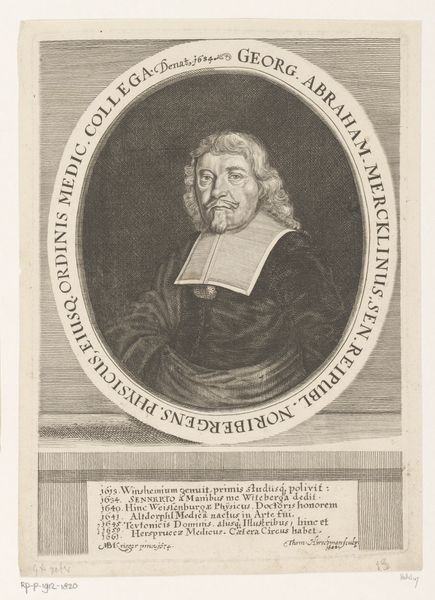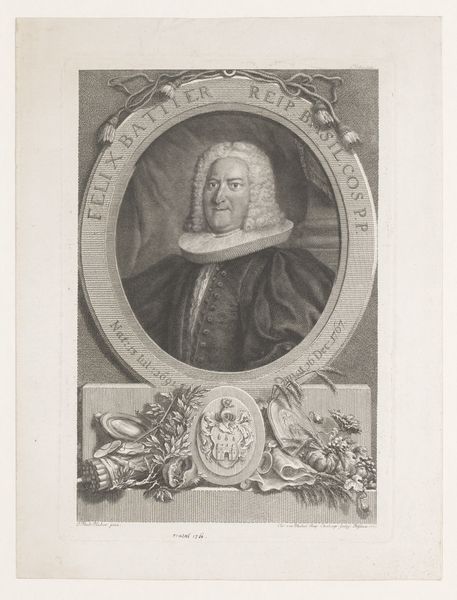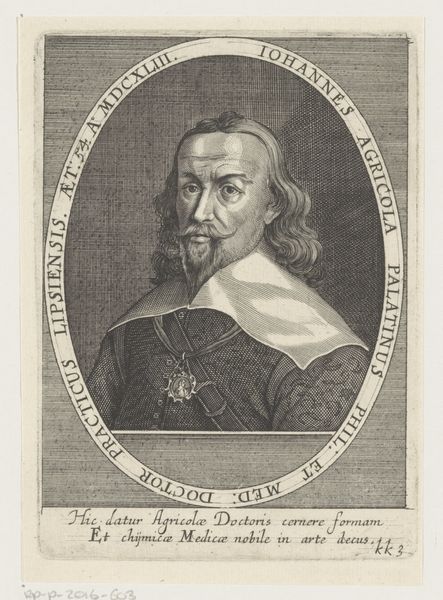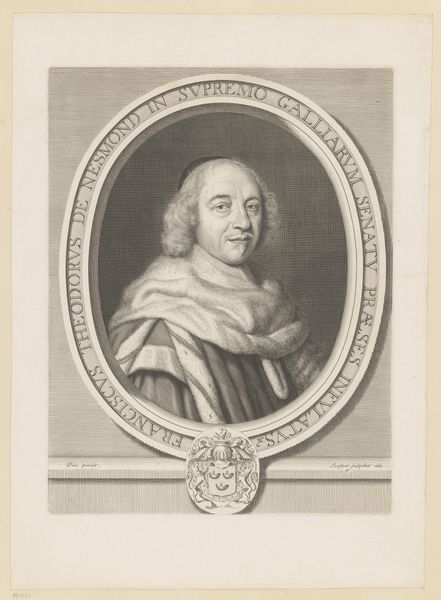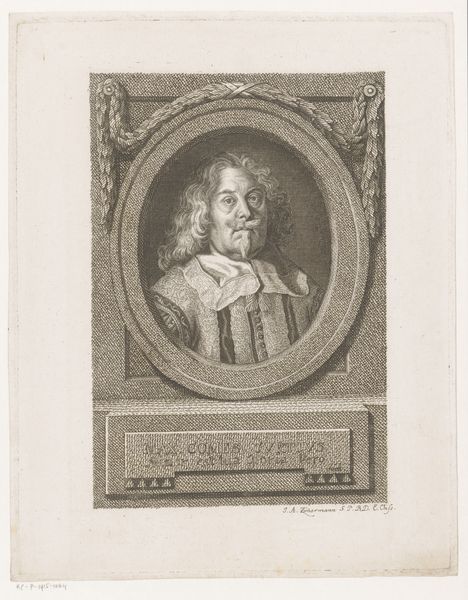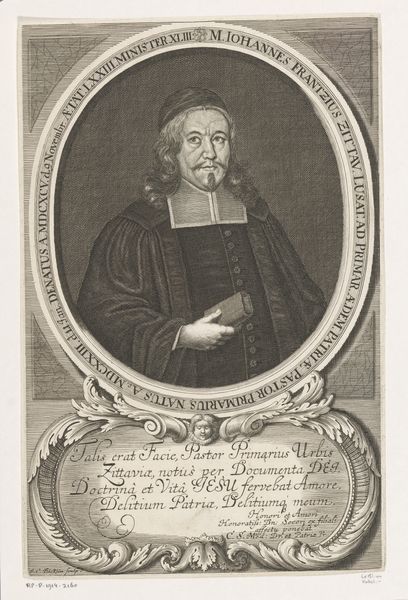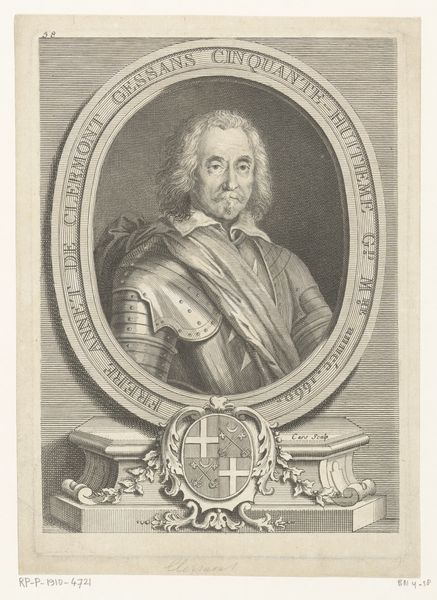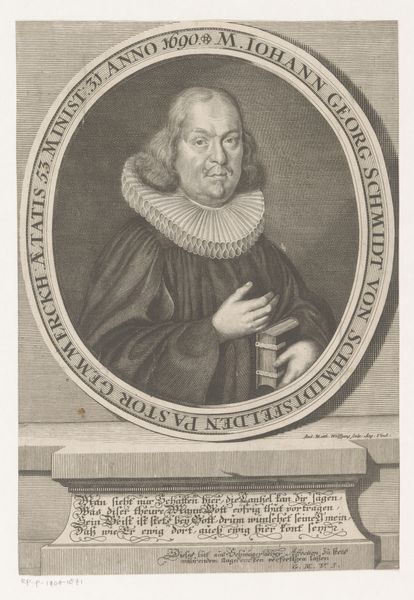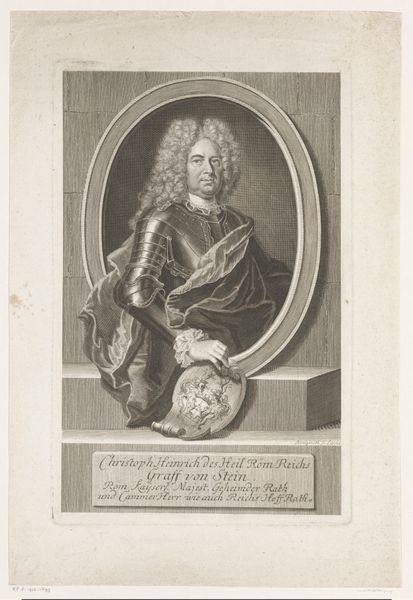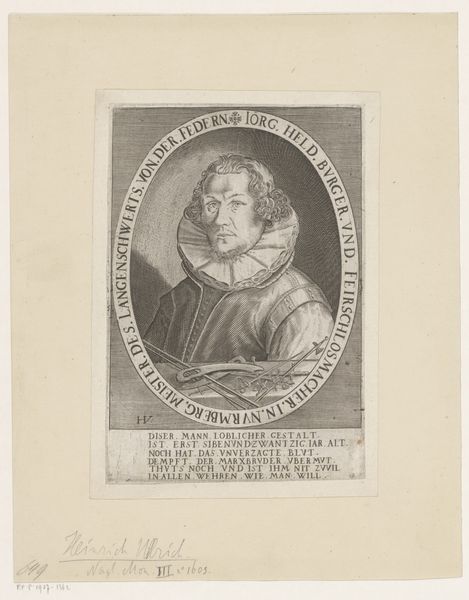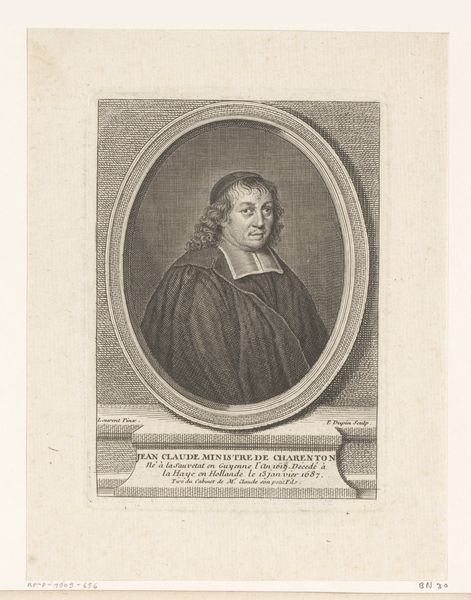
drawing, print, engraving
#
portrait
#
drawing
#
baroque
# print
#
old engraving style
#
pencil drawing
#
history-painting
#
engraving
Dimensions: height 239 mm, width 175 mm
Copyright: Rijks Museum: Open Domain
Editor: Here we have Johann Hainzelmann's 1679 engraving, "Portret van Jean-Baptiste Tavernier op 74-jarige leeftijd", a portrait of a man framed within an oval, itself set against a rectangular plane of script. What strikes me is how precise and laborious this medium must have been. How do you read this portrait? Curator: I see an intentional construction. This isn’t just an image; it’s a produced object. Consider the engraving itself. The act of carving that image into the plate, the press applying ink, and then the paper accepting that impression – it’s all about material transformation and labor. Editor: So you see the process as significant. Can you elaborate on how that affects our interpretation? Curator: Absolutely. Hainzelmann wasn't just creating a likeness of Tavernier; he was participating in a specific social and economic system. Prints like these circulated widely. Who was the intended audience, and how would they have engaged with this image? Consider too the social context in which this image would have been created. Was this intended to celebrate the sitter, and promote the wealth they have obtained via trade and venture? Editor: That's a great point. Did the engraver likely work to commission? And what might have the conditions been like in their studio? Curator: Almost certainly commissioned. We're talking about a skilled craftsperson embedded within a network of patrons, publishers, and consumers. Think about the conditions of labour, the cost of materials, the distribution networks. Hainzelmann's technical skills were a means to producing wealth and reinforcing social hierarchies. These things impact how we read the image itself. The medium and the message were one. Editor: Thinking about it as a material object shifts my understanding entirely. Thank you, that was fascinating! Curator: It makes us question art's traditional boundaries, doesn't it? Seeing art as work allows us to have an intimate peek into 17th-century life and practices.
Comments
No comments
Be the first to comment and join the conversation on the ultimate creative platform.
